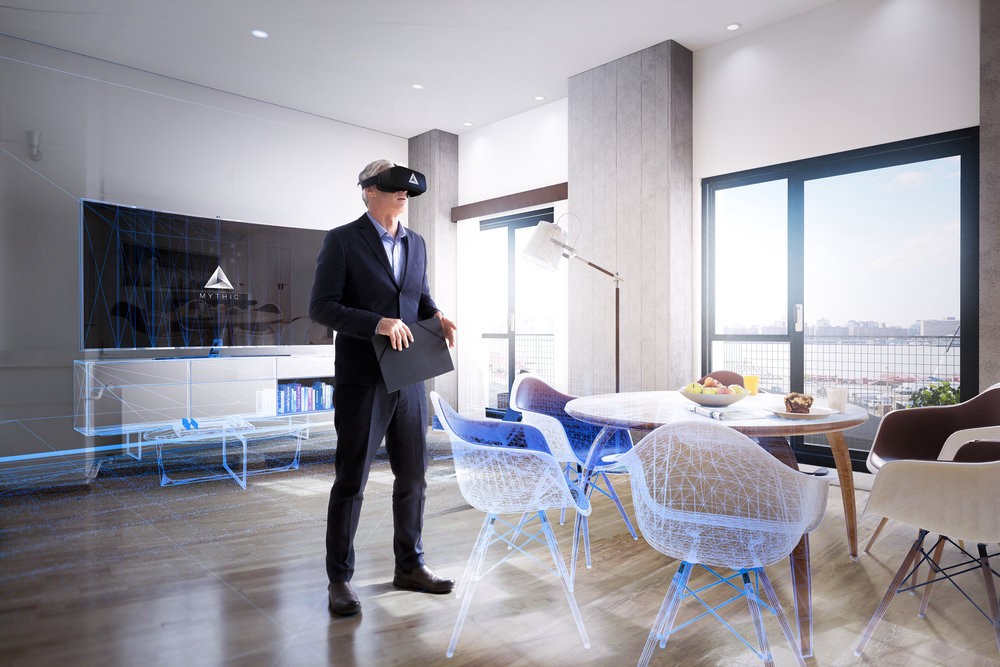An agent usually provides his or her client with a long list of available properties. Finally, there will be explanations, negotiations, and then the actual visits to the houses and apartments. Despite the fact that this workflow has remained the same for decades, it is inconvenient and time-consuming for both realtors and homebuyers.
The real estate industry, however, is undergoing a major shift thanks to virtual reality (VR). Real estate agents can benefit from VR technology to boost their business, gain more clientele, and deliver excellent customer service. An NAR survey revealed that 44% of clients first search online for properties today, making it particularly important to adopt this new technology.
Here are 6 VR applications in Real Estate:
1. Virtual Tours

When a customer lives far from the property, taking a virtual tour can be a game-changer.
A 360-degree virtual tour of a property in Charlotte which is in Boston can be viewed even if you stay in Boston. A virtual tour: so how does it work? Guided virtual tours and interactive virtual tours are typically the two types of 3D virtual tours.
With traditional video promotion, guided visits are more effective. The video is typically entirely virtual or in 360-degrees.
As they are typically created for existing properties, the videos are simple to create. The property can be captured into video format without any programming required with a panoramic camera. Google Cardboard, for example, can assist clients in optimizing their immersive experience.
Customers can select their preferred route when visiting an interactive property. This is done by clicking on specially curated hotspots. Despite being more complex, interactive virtual tours provide better exposure for properties.
2. Virtual Staging

Here’s a side trip from our main topic to illustrate how mannequins increased purchase intent in a retail study. Surveys and eye-tracking data were used as dependent measures in experiments.
Similar to furniture, chic décor can boost the chances of apartments being sold.
Staging is a process in which real estate agencies collaborate with interior designers to enhance properties. Virtual staging isn’t too expensive, and such staged houses sell in 80% less time.
3. Engineering Visualization

Even if a property isn’t built, many customers can visualize possible neighborhoods.
For users to envision engineering more realistically, a virtual reality experience is preferred. A specialist builds a three-dimensional model to show the yet-to-be-constructed property. Such detailed full-scale models allow the user to inspect both the exterior and interior of the property.
4. Virtual Instructions for Tenants

The higher satisfaction, and thus the brand image, is ensured when a customer issue is quickly resolved.
This is equal to landlords’ or agents’ queries as tenants should be contacted frequently. Communication between landlords and tenants can be made more efficient with VR technology.
Therefore, tenants have easy access to virtual instructions that explain how utility services work, allowing them to resolve issues more quickly and enjoy their stay.
5. Virtual Commerce

A key component of VR is commerce. Clients are already reaping the benefits of 3D home tours and staging.
Consider that a client is navigating a property and they want to change the interior; it would be simple for the client to do the changes during the 3D tours. Virtual stores will allow clients to purchase furniture, curtains, and other decor by visiting the virtual tour.
6. Immersive Marketing

VR can be used to create sophisticated marketing campaigns, which can help brokers and agents. Realtors can use AR-enabled print ads to do this. When a prospect points their smartphone camera at the advertisement, the ad shows an interactive 3D model of the property. Newspapers and billboards can display these ads. Real estate professionals can also utilize AR to showcase their properties.
A mobile app can also be created for real estate agencies so they can access an AR-powered ‘portal’. The interactive portal allows marketing representatives to show properties to clients during meetings. Clients have access to such apps even after the meeting and can interact with various objects such as opening windows and switching on the lights remotely.
Conclusion
The real estate industry has already been transformed by virtual reality technology. Virtual tours for some properties are mostly provided by large real estate agencies, such as Sotheby’s. VR is probably going to become more widespread among real estate agents as they incorporate the benefits into their work.
Real estate professionals can create simple virtual home tours (360-degree videos and photos). Many companies provide real estate agents with immersive and sophisticated VR experiences.
Virtual reality is spiking massive scales in the tech industry and has transformed dozens of industry and is continuing to find more solutions. What’s your favorite way to engage in Virtual Reality? Let us know down in the comments below!




